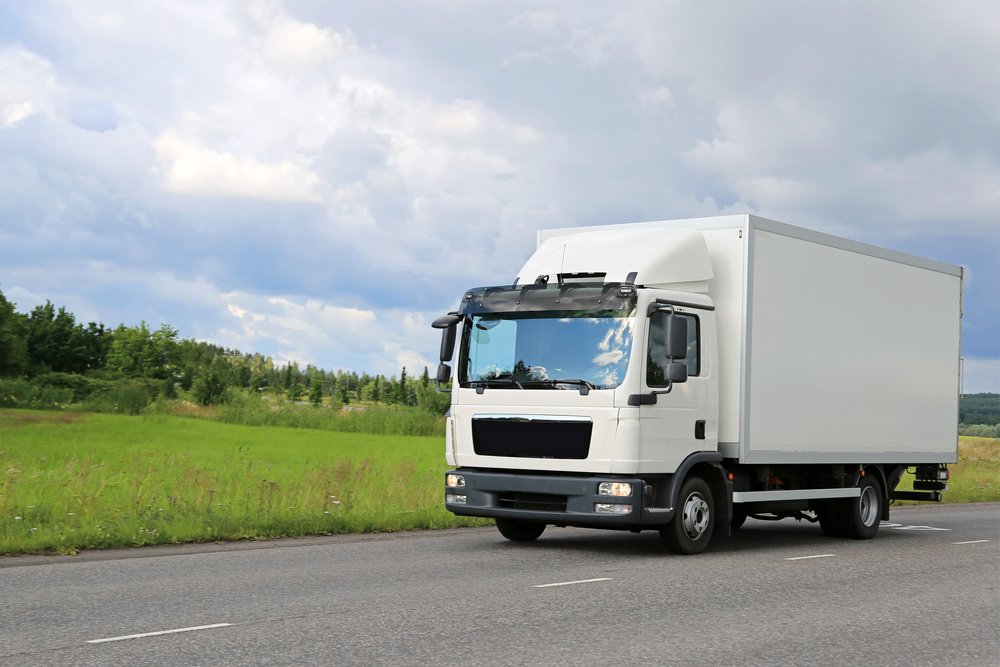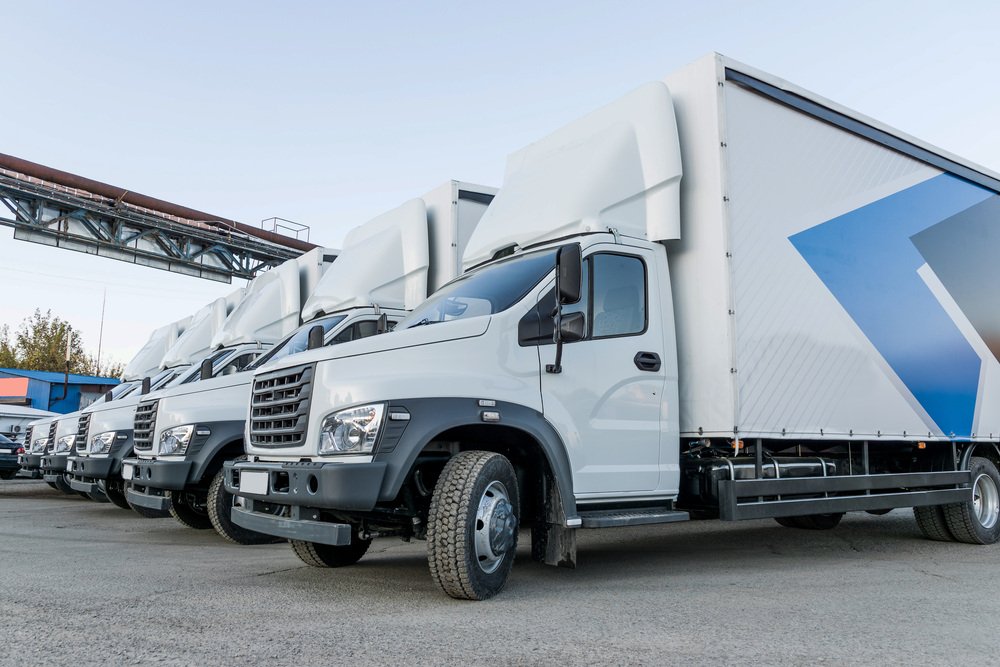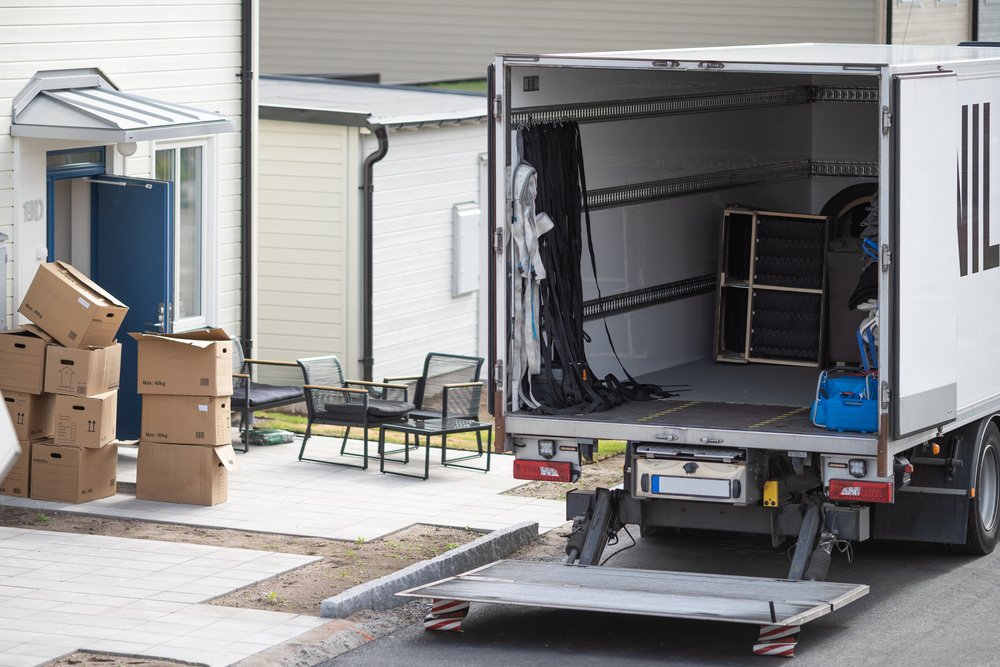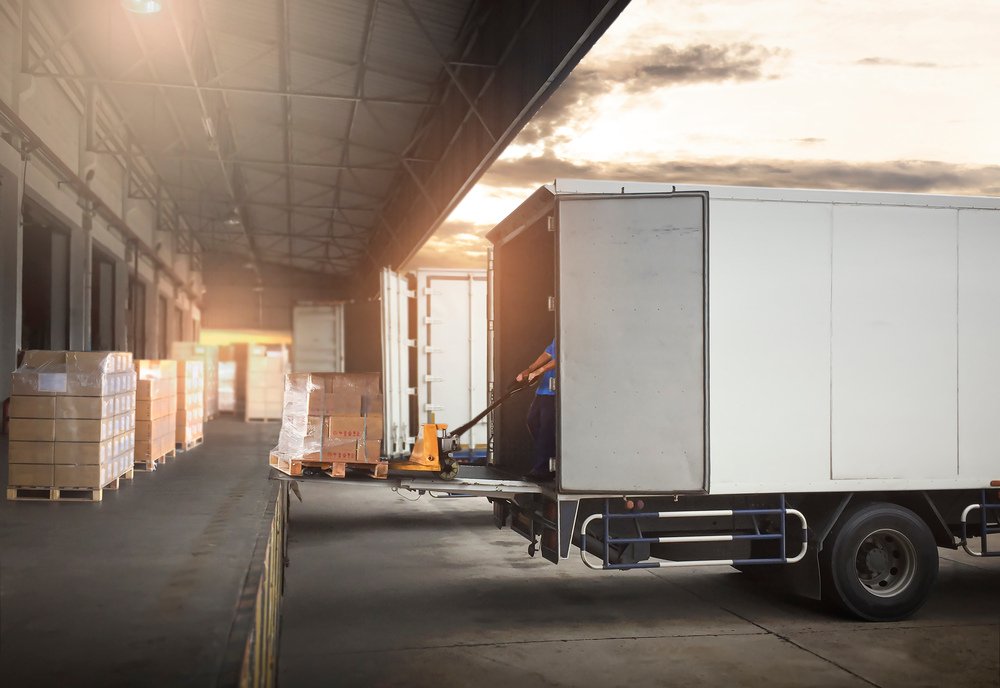
Operating a commercial box truck requires more than a capable vehicle and driver. It demands comprehensive insurance coverage to protect your business from potential financial disasters.
It’s so essential that the FMCSA has a “no Insurance, no authorization” rule that makes it illegal to operate without insurance. Failure to comply can lead to hefty fines.
Whether you’re an owner-operator with a single box truck or managing a small fleet, understanding commercial box truck insurance costs is essential for your business planning and success.
What Is the Cost of Commercial Box Truck Insurance?
Commercial box truck insurance costs vary widely, ranging from $3,000 to $14,000 annually. For many small operators, the average premium is around $5,000 to $7,000 annually, though depending on your trucking niche, this can change significantly.
Breaking this down further, commercial box truck insurance includes basic liability insurance, which costs between $2,500 and $6,000 annually, and full coverage, which can increase your premium to $7,000-$14,000 per year.
New businesses often have higher premiums than established companies because they’re considered high-risk. This should go down as you prove your company to be a responsible and reliable business.
However, while these averages can guide you, your specific circumstances may result in costs falling entirely outside these ranges.
With minimal coverage and optimal conditions, some operators could secure coverage for as little as $2,000 annually. In contrast, others with poor driving records or specialized cargo might see premiums exceeding $20,000 annually.

A Quick Example
Let’s take a look at two hypothetical but identical 16-foot box trucks operating in the same city:
Truck A: A company with five years of experience, clean driving records, and a local history of delivering retail goods operates this service. Their annual premium is approximately $4,200.
Truck B: Operated by a new company (less than 1 year old), with a driver who has one at-fault accident in the past 3 years, delivering the same cargo. Their annual premium is approximately $7,800.
That’s a significant 86% difference. It demonstrates how significantly your business’s profile can affect your commercial box truck insurance costs, even with identical vehicles and cargo.
It’s also worth noting that most insurers offer monthly payment options. Many smaller operators find financing their insurance premiums allows for better cash flow management, especially during the first few years.
Factors that Affect Your Commercial Box Truck Insurance Cost
What are the influences that change your commercial box truck insurance cost? How do you get comprehensive coverage while still snagging affordable box truck insurance?
By understanding the factors insurance companies consider when calculating your commercial box truck insurance rates, you can position yourself in a favorable light and secure lower insurance costs.
Truck Type
Box trucks come in various sizes and configurations, and these differences significantly impact commercial box truck insurance costs:
- Size and Weight: Larger, heavier box trucks (like 26-foot models) typically cost more to insure than smaller 12-foot or 16-foot trucks. This is due to their potential to cause more substantial damage in accidents.
- Age of the Truck: Newer trucks often have better safety features but higher replacement costs. Insurance companies balance these factors when determining rates.
- Safety Features: Trucks equipped with advanced safety technology, such as electronic stability control, automatic braking systems, or telematics, may qualify for discounts because they’re safer to operate.
- Modifications: Custom modifications might increase the truck’s value and, consequently, the cost of insuring it.

An Example: Truck Size Comparison
Let’s look at how this can play out in the real world.
Let’s say there are two trucks: The annual insurance cost of a 14-foot box truck with basic liability ($750,000 limit) is approximately $3,800. On the other hand, the yearly insurance cost for a 26-foot box truck with the same coverage is roughly $5,200. The trucking company might also need add-on gap coverage to fully protect the business and its employees.
This difference reflects the increased risk associated with larger vehicles, which are more challenging to maneuver and potentially cause more significant damage in accidents.
Coverage Requirements
The extent of protection you choose naturally influences your premium. The more coverage you need, the more expensive it’ll be:
- Liability Insurance: The law requires this coverage to pay for damages you cause to others. Minimum limits vary by state but usually fall between $750,000 and $1,000,000 for commercial vehicles.
- Physical Damage Coverage: Collision coverage pays for damages to your truck from accidents, while comprehensive coverage protects against theft, vandalism, weather damage, and other non-collision incidents.
- Cargo Insurance: Protects the goods you’re transporting with premiums based on the value and type of cargo.
- Uninsured/underinsured Motorist Coverage: This coverage protects you when a driver with insufficient insurance hits you.
- Medical Payments/Personal Injury Protection: This insurance covers medical expenses for you and your passengers, regardless of fault. It is required by law in many states.
Another factor to consider is state minimum liability. A policy with state minimum liability limits might cost significantly less than a comprehensive policy with $1 million liability limits and full physical damage coverage.
Trucker Driving History
Your driving record and those of your employees significantly impact insurance rates because they show who is high-risk and who is low-risk. Insurance companies typically review the past 3-5 years of driving history when determining rates.
If you or your listed drivers maintain clean records, you could reduce your truck insurance cost by 10–30%. On the flip side, recent accidents might spike your rates by 20–50% or more.
Serious violations like DUIs or reckless driving can double your commercial box truck insurance cost and may even make insurance companies unwilling to offer a policy.
Truck Cargo
What you transport in your box truck substantially affects your insurance costs. For example, a box truck carrying furniture might have an annual premium of $5,000, while the same truck transporting medical supplies could cost $7,500 or more to insure.
If you transport general household goods or retail items, your insurance costs will usually be lower. However, hauling hazardous materials can increase premiums by 50–100% due to increased risk.
High-value items like medical equipment or electronics often require comprehensive coverage, while perishable goods need specialized protection in case refrigeration fails.
Fragile materials, such as glass or ceramics, can also increase your insurance premiums simply because the likelihood of claims is higher. Cargo insurance protects these goods, but the added value and risk impact your total box truck insurance bill.

Trucking Business Location
Where you operate your box truck business plays a significant role in determining insurance costs. A box truck operating primarily in rural Iowa might cost half as much to insure as an identical truck operating in metropolitan Los Angeles.
Urban areas have higher truck insurance costs due to dense traffic and a higher probability of accidents. States with high claim frequencies—like California, New York, or Florida—tend to have insurance rates above the national average.
If you operate in areas with extreme weather, expect to see those risks reflected in your insurance coverage. High local crime rates can also lead to increased costs, as insurance companies factor in potential losses from theft or vandalism when calculating your premium.
Commercial Box Truck Value
The value of your box truck directly impacts your physical damage premium. A new $80,000 box truck might cost $2,000-$3,000 more annually to fully insure than a similar 10-year-old model worth $20,000.
Newer or higher-value commercial box trucks cost more to repair or replace, which drives up comprehensive insurance and collision costs. Over time, as your box truck depreciates, your physical damage coverage cost may go down.
Distance Traveled
The more miles your box truck covers, the greater your exposure to risk and the higher your commercial box truck insurance cost. Insurers may use telematics devices to track your actual mileage for more accurate premium calculations.
Local operations within a 50-mile radius usually enjoy lower premiums and are more likely to secure cheap box truck insurance. Regional routes, which span several states, carry moderate costs.
However, long-haul operations, especially those traveling across the country, face the steepest rates due to increased accident exposure and longer hours on the road.
Annual mileage estimates also directly impact rates. For example, trucks traveling more than 50,000 miles yearly could pay 30-40% more than those traveling less than 20,000.

Type of Trucking Business
Your business operations influence your risk profile and final commercial box truck insurance cost. Moving companies typically face higher box truck insurance rates because of diverse cargo and elevated handling risks.
Contractors using commercial box trucks to transport tools or heavy-duty equipment may get more affordable box truck insurance since the value of the cargo is lower.
Food service operations, particularly those hauling perishable items with frequent stops, face unique risks—raising their premiums significantly if refrigeration failure or cargo spoilage becomes a concern.
Tips to Save Money on Your Commercial Box Truck Insurance Costs
Controlling insurance costs is essential for maintaining a profitable box truck operation. Here are proven strategies for reducing premiums while maintaining adequate protection.
Compare Multiple Insurance Quotes
Different insurers evaluate risk factors differently, resulting in significant premium variations. Obtaining quotes from at least three to five providers can yield 10-30% savings. You could find much cheaper box truck insurance for precisely the same coverage just by doing your due diligence and keeping your eyes peeled.
Optimize Your Deductibles
Increasing your deductible is one of the most straightforward ways to reduce premiums. Consider this typical savings breakdown:
- $500 deductible: $2,800 annual physical damage premium
- $1,000 deductible: $2,380 annual premium (15% savings)
- $2,500 deductible: $2,240 annual premium (20% savings)
When selecting higher deductibles, ensure your business has sufficient cash reserves to cover these out-of-pocket expenses if a claim occurs.
Bundle Insurance Policies
Many insurers offer 5-15% discounts when consolidating multiple coverage types with one provider. So, consider bundling your commercial truck insurance with your general liability coverage, workers’ compensation, and property insurance.

Implement Safety Programs and Technology
Insurance companies reward businesses that actively reduce risks because this reduces the chances of them having to pay out large sums of money.
Use safety programs to lower your premiums. Documented safety training, regular safety meetings, and formal accident prevention policies can showcase your dedication to safety and significantly reduce your premiums.
Telematics and anti-theft Devices, such as GPS tracking systems, advanced telematics with driver monitoring, and Anti-theft systems, can also earn discounts.
Innovative Payment and Management Strategies
Paying your entire premium upfront can save you up to 10% of the final premium.
Hiring and retaining drivers with clean records and experience can also offer impact rates. Some insurance companies even provide tiered discounts, for example:
- 3-5 years experience: 5% discount
- 5-10 years experience: 10% discount
- 10+ years with a clean record: 15% discount
Lastly, maintain good credit. A good credit score can save you significant money on your premiums. If your credit score isn’t the best right now, prioritize it for your business.
Leverage Industry Connections
Joining professional organizations like state trucking associations often qualifies you for premium discounts with participating insurers.
You should also work with specialized brokers. Brokers focusing exclusively on commercial truck insurance understand the market nuances and can often find more competitive rates than general insurance agents.
Regular Policy Reviews
As your fleet ages, consider adjusting your physical damage coverage or accepting higher deductibles for older trucks with significantly depreciated values.
Operators with cash reserves who self-insure physical damage on older vehicles redirect premium savings toward future vehicle purchases. This can help divert funds to more essential trucks that can help your business grow.

Conclusion
Commercial box truck insurance is necessary to protect your business from potentially devastating financial losses. While premiums can be substantial, understanding the factors that influence these costs can help you choose box truck insurance that suits your needs and budget.
By carefully evaluating your specific needs, implementing safety measures, maintaining clean driving records, and strategically shopping for coverage, you can secure appropriate protection while minimizing unnecessary expenses.
Ready to secure the best commercial box truck insurance rates while protecting your business? Contact us at Mission Financial Services to explore flexible financing options explicitly tailored for trucking professionals, even if you’re a first-time buyer or facing credit challenges.


